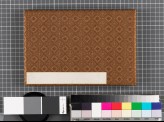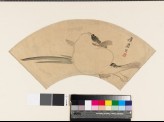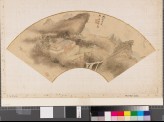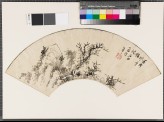Japanese Paintings in the Ashmolean Museum
A catalogue of the Ashmolean's collection of Japanese paintings by Janice Katz (published Oxford, 2003).

Impossible landscapes and ink-play flowers are the foundation of the literati painter's repertoire. In China, such literati ‘Southern School’ painting was practised by scholar-bureaucrats on an amateur basis as a means of self- expression. They fundamentally distinguished their own pure pursuit of the arts from that of the professional court painters of the Northern tradition in terms of class, morals and style. Though trade and travel were restricted under the Tokugawa regime in Edo-period Japan, a variety of Chinese paintings and painting theories flowed in, inspiring the formation of the Nanga (lit: Southern painting) movement. The Nanga style of painting carried no such class distinction as it did in China. It was embraced by Confucian scholars, merchants and farmers alike who were attracted to the Chinese manner of 'idealist painting’ [1] initially as a method of personal cultivation. In addition, many artists lived by travelling extensively and selling their paintings. The term bunjinga or literati painting, sometimes used as a synonym for Nanga, describes therefore the style and not the social background of its practitioners.
At first, the Japanese painters were at a loss to fit the diversity of styles they were receiving into their larger context as understood in China. The flow of information into Japan came in three main varieties: Chinese printed books of painting and poetry, original paintings and copies, and Chinese artists themselves, who settled for a time in Nagasaki.
The two most influential illustrated texts were the Hasshū gafu (Book of Eight Kinds of Painting), first published in 1672 and the Kaishien gaden (Mustard Seed Garden Manual of Painting) Japanese edition of 1748. The former was made up of illustrations to poems, but the latter was a proper painting manual that described the various ancient masters’ styles. Increasingly, actual Chinese paintings were available to be copied and studied. Chinese paintings had of course been seen in Japan much before the Edo period. Beginning in earnest with the Ashikaga shoguns in the late fourteenth century, paintings of the Song, Yuan and Ming dynasties, as well as bronzes, porcelain and textiles used for display or use in the tea ceremony, were enthusiastically imported. The constant flow of Chan (J: Zen) Buddhist monks from the mainland to the main Gozan monasteries of Kyoto also fed a general vogue for things Chinese. The curators (dōbōshū) of the Ashikaga shogunal art collection divided the Chinese artists into the main categories of upper, middle and lower, codifying the use of certain models for years to come. New paintings arriving from the mainland in the Edo period looked very different, therefore, from the so-called Chinese school in Japan, namely the Kano painting academy. More than the paintings, the greatest impact on the Nanga movement came from Chinese artists themselves who lived as part of Nagasaki’s well-established Chinese community. I Fukyū (Ch: Yi Fujiu) who visited repeatedly from 1726 to 1744, brought his interpretation of Yuan dynasty masters such as Ni Zan. Though Fukyū’s works were a catalyst for the Japanese to understand certain Chinese painting traditions, he is not credited with establishing a school per se. In this regard, Shen Nanpin (fl. mid eighteenth century), who stayed in Nagasaki from 1731-3, had the most lasting influence on native artists.
The Ashmolean’s collection of Nanga works comprises paintings by late eighteenth- and nineteenth-century artists. The earliest piece in the section is a pair of handscrolls by Kō Fuyō [EA1966.124 and EA1966.125]. It was no doubt based on a lost Chinese or Chinese-inspired model, and expresses the Nanga painter’s affinity for the landscape of the continent, even if he could only travel there in his own mind.
Like Fuyō, the next generation of Nanga artists continued to flourish in Kyoto, the cultural centre of Japan. The Heian jinbutsushi (Who’s Who of Kyoto), printed in several editions between 1768 and 1867, lists the many Nanga artists working in the capital. Native Kyoto artists such as Chikudo Kinei [EA1966.123] were great in number, but the city was of course a mecca for artists from other areas: Yamamoto Baiitsu [EA1964.89, EA1966.115, and EA1966.116] and Nakabayashi Chikuto [EA1966.98] came from Nagoya, and Tanaka Kaibi [EA1966.102] was originally from Osaka. In the capital of Edo, the movement began to take shape with Tani Bunchō, yet a rare work by Bairi Sanjin [EA1966.117] in the Ashmolean’s collection gives us insight into Edo Nanga prior to Buncho’s revolution. Buncho’s extreme talent and diversity transformed the Edo art world. Two fan compositions, Landscape [EAX.5431] and Butterflies [EAX.5387], owe their inspiration to vastly different sources which Bunchō then executed as his own. His plethora of students, including Takaku Aigai [EA1966.112] ensured that his legacy would be felt in the capital for some time to come. Important regional centres for the arts sprung up as well, notably in Bitchū province, where artists such as Ono Unpō [EA1966.149] were active in cultural circles as patrons and painters.
The Nanpin school can be considered a branch of Nanga in that these artists were also influenced by Chinese paintings, or rather a mixture of Western and Chinese styles practised by artists in the port city of Nagasaki. Their work, mostly of flower and bird subjects, derives from a blend of realism with a brightly coloured decorative manner. Beginning with Shen Nanpin’s only Japanese student, Kumashiro Yūhi [EA1966.4], artists such as Sō Shiseki [EA1966.147], Hirowatari Ganhi [EA1973.66], Masuyama Sessai [EAX.5436], and Kinoshita Itsuun [EA1966.101] took the Nanpin school beyond its origins in Nagasaki and beyond its basis in bird and flower subjects. Of course, many Nanga artists from Kyoto and Edo who did not affiliate themselves with the Nanpin school nevertheless incorporated its methods into their paintings, seen for example in Yamamoto Baiitsu’s Flowers of Summer and Autumn [EA1966.115 and EA1966.116].
 Nine bends of the Jiuquxi River in the Wuyi mountains (EA1966.124)
[obj]EA1966.125[/obj]
Nine bends of the Jiuquxi River in the Wuyi mountains (EA1966.124)
[obj]EA1966.125[/obj]
 Viewing a waterfall (EA1966.123)
Viewing a waterfall (EA1966.123)
 Flowers of autumn (EA1966.115)
Flowers of autumn (EA1966.115)
 Flowers of summer (EA1966.116)
Flowers of summer (EA1966.116)
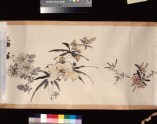 Flowering plants of the four seasons (EA1966.132)
Flowering plants of the four seasons (EA1966.132)
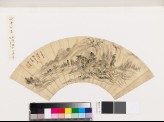 Mountain valley (EA1966.102)
Mountain valley (EA1966.102)
 Mountain landscape with figures by a river (EA1966.117)
Mountain landscape with figures by a river (EA1966.117)
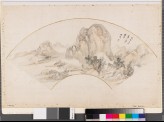 Misty mountain landscape (EAX.5431)
Misty mountain landscape (EAX.5431)
 Butterflies (EAX.5387)
Butterflies (EAX.5387)
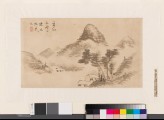 Summer mountains with two huts (EA1966.112)
Summer mountains with two huts (EA1966.112)
 Mynah birds on a willow tree (EA1966.4)
Mynah birds on a willow tree (EA1966.4)
Notice
Object information may not accurately reflect the actual contents of the original publication, since our online objects contain current information held in our collections database. Click on 'buy this publication' to purchase printed versions of our online publications, where available, or contact the Jameel Study Centre to arrange access to books on our collections that are now out of print.
© 2013 University of Oxford - Ashmolean Museum



